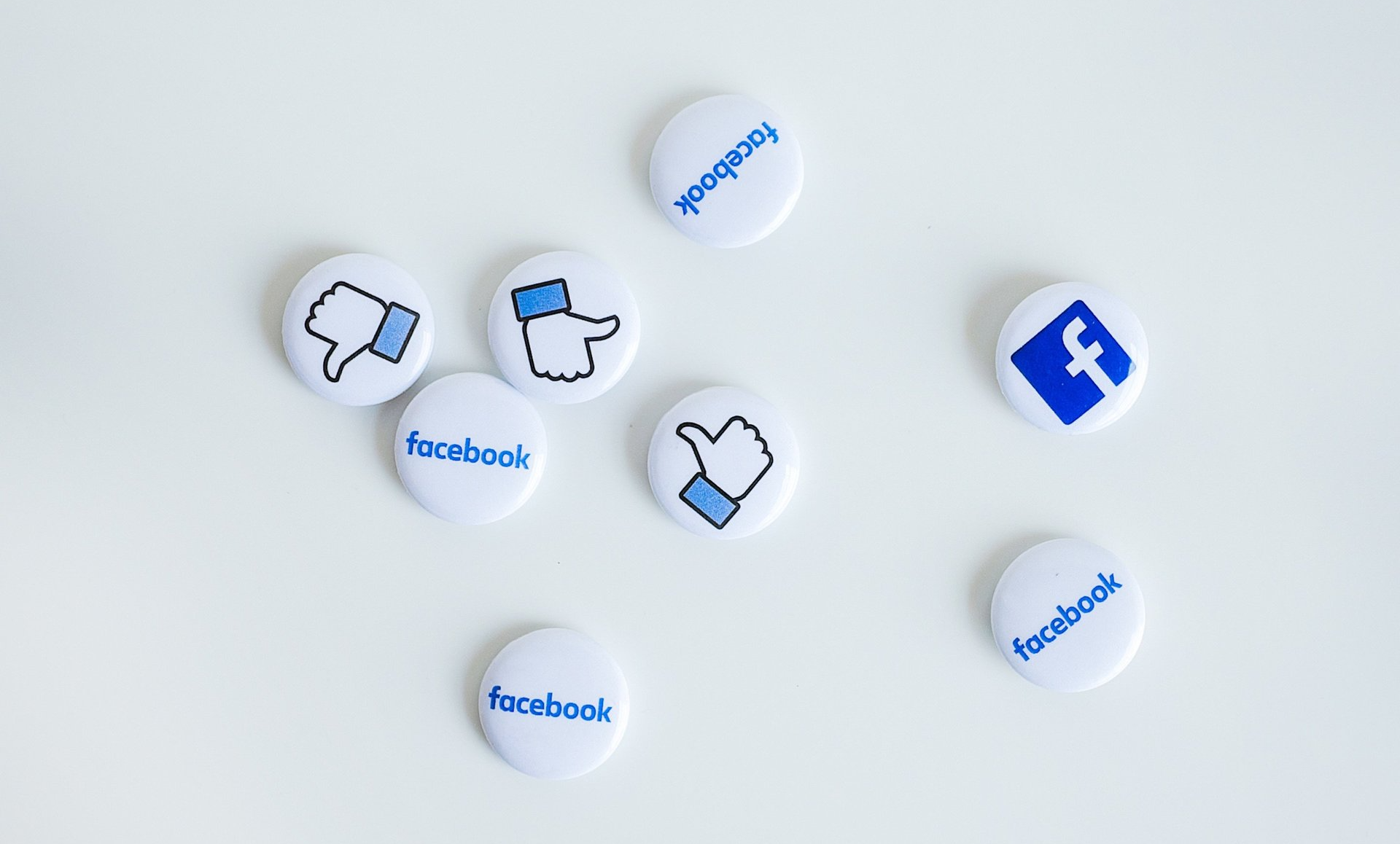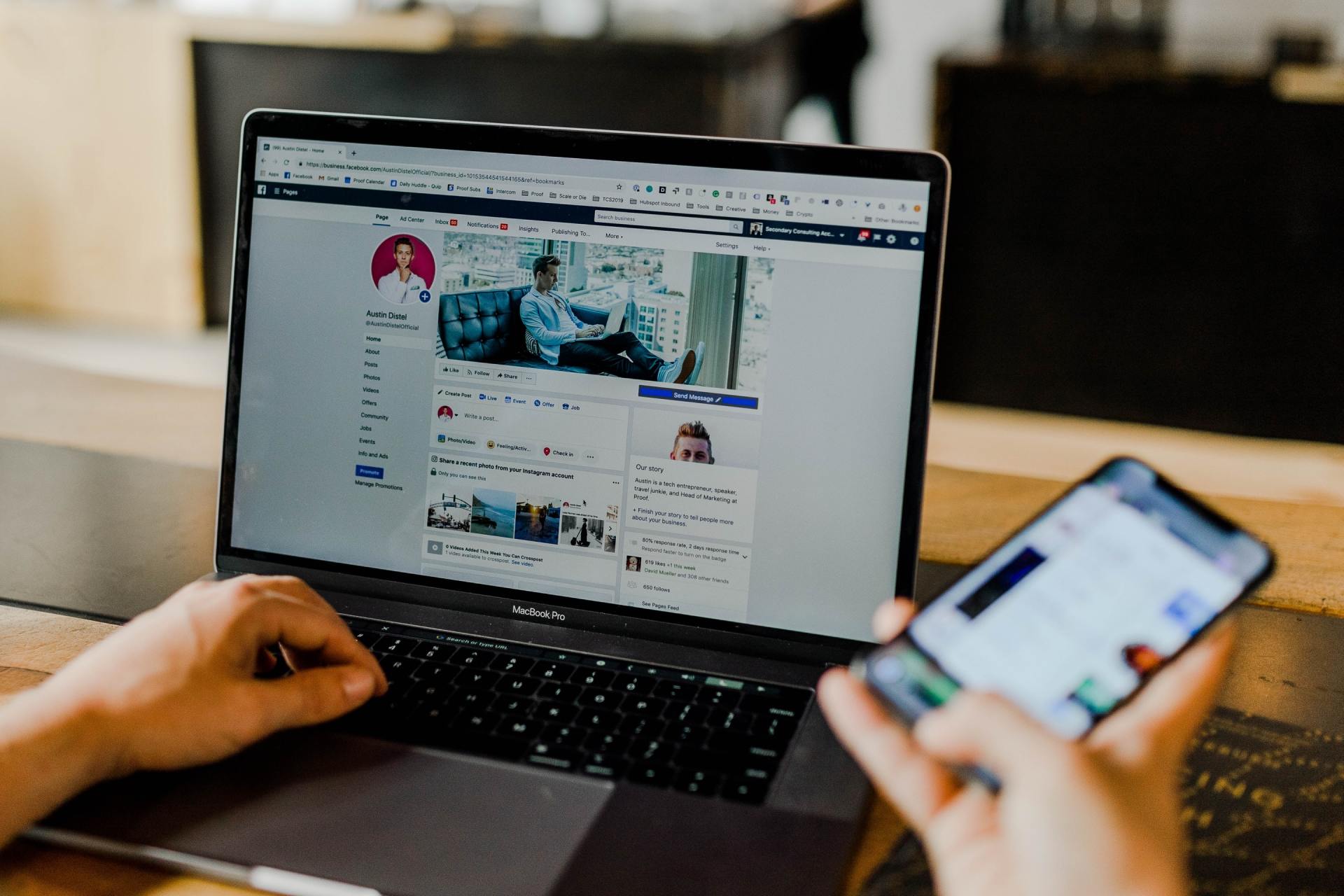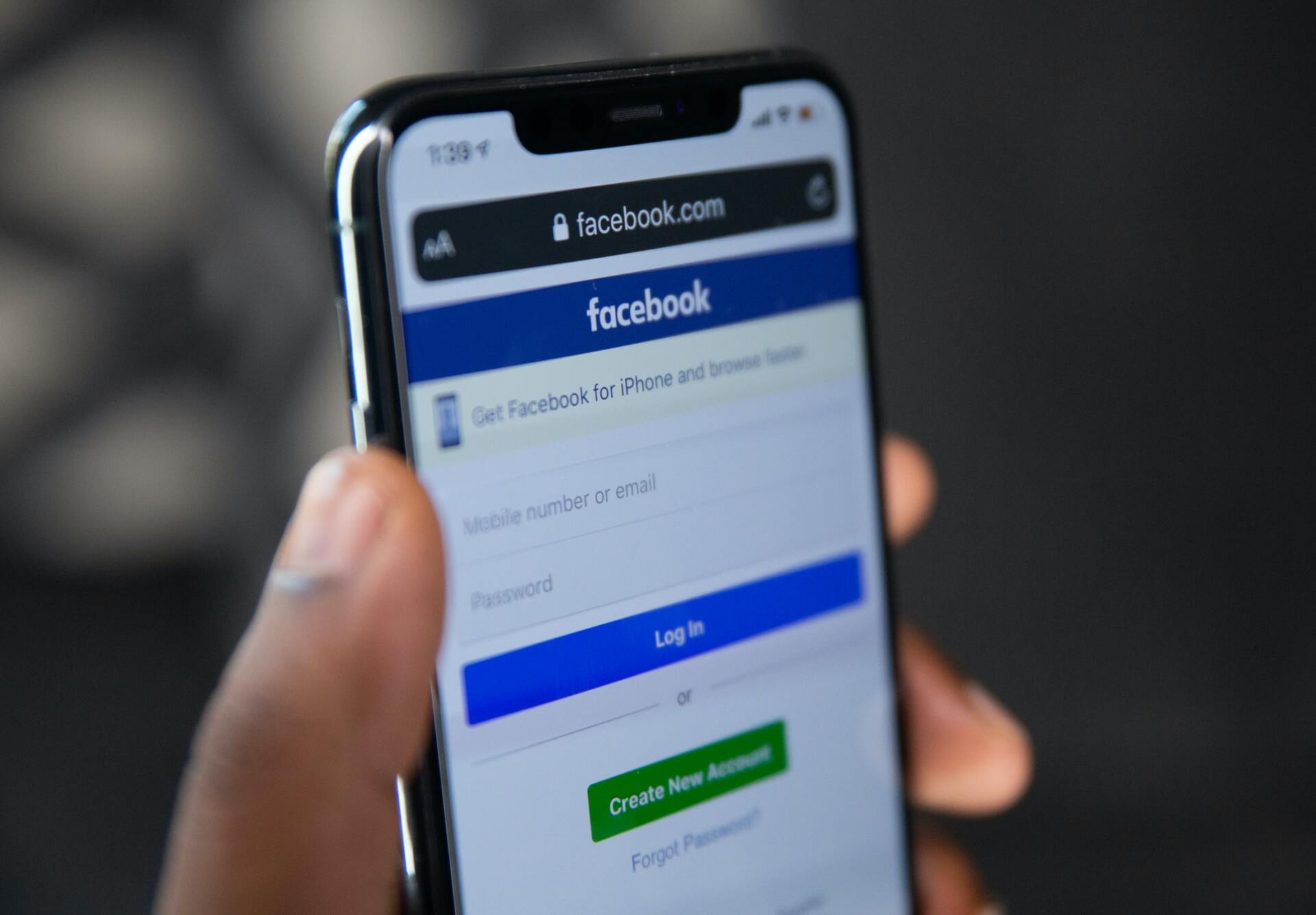How to advertise on Facebook in 2021
Facebook is the world’s largest social network, so advertising on Facebook is a really essential way to connect with your audience.
It has 2.6 billion active users worldwide and 44.84 million in the UK. It is used daily by 44% of the UK population, with 11.2 million users in the 25 to 34 age bracket alone. (Statista) So if you want to connect with your audience, you need to embrace Facebook.
While it is possible to connect organically through Facebook, the ever-changing algorithm can make that a challenge. But the good news is that Facebook’s micro-targeting means you can reach your exact target audience through advertising.
Facebook ads allow you to get your message across to the people who are most likely to buy your products and services – and not waste time and money on advertising to people who wouldn’t be interested.
Used in the right way, Facebook ads are very competitively priced. They are good for your budget and return on investment, as well as your conversion rate.
There is more than one way to advertise on Facebook. In fact, there are a huge number of ways to advertise. To make your budget and your ads work for you, it is important to understand all of the options, so that you get the best results.

Types of Facebook ads
The options for Facebook ads include video and even interactive ads, so you can select the type of ad which works best for your company, your products or services and, most importantly, the audience you are trying to reach.
Image ads
Simple image ads are a great way to get started with Facebook advertising. You can create one very quickly, simply by boosting an existing organic post from your company’s Facebook Page. (And if your company doesn’t have a Facebook Page, you need to set one up!)
While image ads might be simple, they don’t have to be boring if you use the right images. Look for a strong photo or graphic which really conveys your brand or your product – make it fun, colourful and hard to ignore!
Carousel ads
Carousel ads use as many as 10 images or videos to highlight your service or product. You can use them to look in-depth at the benefits of a single product, to promote a number of different products or even to piece the pictures together into a large panoramic image.
Video ads
Video ads can appear in your audience’s News Feed or Stories or as an advert during longer Facebook videos. Be imaginative with your videos to make sure you are using them in the most effective way. Can you show your product in action so your audience really gets a feel for it?
If you don’t have the time or the budget to film a full video, you can use simple animations or GIF-like graphics for your video ads.
If a prospective customer sees your video in their feed, it will also tell them how many of their friends already like your business. If several of their friends like what you do, they are more likely to be interested in your company and what you have to offer.
Video poll ads
Video poll ads are an extension of video ads for mobile only. They include a simple interactive element – something like "Which do you prefer?" which helps increase engagement. Facebook’s own data suggests video polls are more effective at increasing brand awareness than regular video ads.
Collection ads
Collection ads are for mobile devices only. They allow you to showcase five different products and, importantly, allow customers to click to buy.
Working with Instant Experience ads, collection ads allow people to buy your products without having to leave Facebook and visit your website. This makes shopping very easy for people who are out and about and might not have a very good internet connection.
Instant Experience ads
Instant Experience ads are full-screen ads which have the advantage of very fast loading speeds – loading 15 times faster than a mobile website outside Facebook.
You can also link to additional Instant Experiences through Ads Manager, to allow your audience to discover more instant mobile content from your company.
Slideshow ads
Slideshow ads are an easy way to create short videos from your existing or new content – including a collection of still photos, text or video clips. If you don’t have your own suitable images, you can use stock photos from Ads Manager.
The advantage of slideshow ads is that they use five times less bandwidth than video, but still have the eye-catching motion. They are a great way to grab people’s attention when they are on the go or have slow internet connections.
Dynamic ads
Dynamic ads can be particularly effective, as they allow you to promote products to the consumers who are most likely to be interested in them.
If someone has looked at a particular product on your website, or even put it in their online shopping basket and abandoned it, dynamic ads for that product will appear on their feed when they browse Facebook. The ad will remind a potential customer to go ahead and make the purchase.
Dynamic ads can be used in a number of formats, including image, collection and carousel ads.
Lead ads
Lead ads are another mobile-only form of advertising, which are designed specifically to help prospective customers give you their contact details without a lot of typing. They are a great way to feed into your sales funnel by capturing essential information about your audience.
They are particularly effective if you want to pick up newsletter subscribers, encourage people to request a demo or sign up for a trial of your product.
Lead ads can use carousel, image, video or slideshow advertising formats.
Stories ads
Stories ads are full-screen vertical video ads, created for the high proportion of the population who won’t turn their phones round to watch widescreen videos. (Scientific American)
More than half of the people surveyed by Ipsos on behalf of Facebook said they were making more online purchases due to Stories ads.
Stories augmented reality ads
Stories augmented reality ads really do bring your brand and your products to life. Using filters and animation, they provide a new way for your audience to interact with your business.
Messenger ads
There are 1.3 billion monthly users of Facebook Messenger worldwide – and Messenger ads gives you access to them. When setting up your ads, select Messenger as your chosen placement.
You can also send prospective customers to Messenger to start a conversation with you by running click-to-Messenger ads in the Facebook feed. This opens a Messenger conversation between your page and the prospective customer, so that they can have a one-to-one conversation with your sales team.
Playable ads
Playable ads are another new and interactive form of advertising from Facebook. These would definitely be aimed at fun products and the younger end of the market. They allow you to create a game to encourage your audience to interact with your brand and your content.
How to advertise on Facebook
The first step to advertising on Facebook is to have a Facebook business page. If you don’t yet have one, you should! Once you’ve got your Facebook business page, you need to go to Facebook Ads Manager to set up your first Facebook advertising campaign. (Alternatively, you can use Business Manager on Facebook to set up your ads if you prefer.)
Choose your objective
In Ads Manager, select Campaigns and click Create to get started.
You have a choice of 11 goals to align with your objectives for your advertising campaign:
- Brand awareness – introduce your brand to a new audience
- Reach – get your ad seen by as many people as possible
- Engagement – reach a wide audience to increase your engagements or likes on Facebook
- Traffic – drive visitors to a particular web page
- Video views – get more people watching your videos
- App installs – encourage people to install your app
- Lead generation – encourage new people into your sales funnel
- Conversions – encourage specific actions on your website, including sales or signing up for subscriptions
- Messages – get people to contact your business through Facebook Messenger
- Catalogue sales – link your ads to the product pages for the items people are most likely to buy
- Store traffic – increase footfall to your bricks and mortar shop
Choose one of these 11 objectives based on your goals for each advertising campaign.
For conversion or sales-based objectives, you will be charged per action, whereas for exposure objectives (eg views and traffic) you will pay for impressions (each time the ad is loaded).
Give it a name
Over time, you will probably have a large number of Facebook ads running, so give each campaign a name so you can keep track of it.
At this point, you can choose whether or not to run an A/B test, which will help you find out if one version of an ad is more effective than another. We would always recommend running an A/B test! You have nothing to lose in selecting this option.
You can also select at this point whether to use budget optimisation, which allows Facebook to decide how to divide the budget between Facebook ad sets (a group of ads which share the settings for how, when and where to run).
Set up your ad account
You may already have got an ad account set up, but if not, you need to create one. Click the Set Up Ad Account button and enter the key details to create your account – including your preferred currency, time zone and country.
Make sure you do it carefully, because if you want to change this information later, you will need to set up a whole new account.
Choose your audience
For your Facebook ads to be effective, this stage is really key.
Scroll down to start building your ideal target audience. Start by choosing your target location, gender, age and language. As you make each selection, keep checking the audience size indicator, which will give you an idea of the potential reach of the ads.
Once you’ve added the basics of your audience, you move onto the important detailed targeting. Effective targeting is the best way to make the most of your budget. You have two fields to help you make your audience as individual as you like:
- Detailed targeting – use this to specifically include or leave out people based on interests, behaviours and demographics. You can be really particular here – for example you could include people who are interested in running long distances, but exclude people who are only interested in sprinting.
- Connections – you may want to reach a whole new audience or you may want to reconnect with people who have already engaged with your brand on Facebook. If you want to reach a new audience, select Exclude people who like your Page but if you want to target existing fans, choose People who like your Page. You can also choose to target friends of people who have already engaged with your brand.
Choose your placement
You have a range of options of where to run your ads. If you are new to Facebook ads, you may simply want to choose Automatic Placements, which means Facebook will place your ads across Instagram, Facebook, Messenger and its Audience Network – external websites, including gaming apps, which work in partnership with Facebook.
Once you have more understanding of the effectiveness of different channels, you may wish to choose specific locations.
You can choose from:
- Platform – Facebook, Instagram, Messenger or Audience Network
- Device type – desktop, mobile or both
- Placements – Feeds, Stories, messages, apps and (external) websites
Set your schedule and budget
Decide how much you want to spend on your ads and set a daily or lifetime budget. Then either set them to start straightaway or choose a start date, as well as an end date.
To avoid overspending, you also have the option to set cost and bid controls, which will limit the spend per action eg you could set a maximum of 50p for each page like and a maximum of £25 per day on the campaign.
Advanced budget options mean you can go into fine detail on exactly how you want to spend your money effectively.
If you have a lifetime budget, you can choose to only show your advert when people are most likely to be on Facebook to increase the effectiveness of your ads.
Create your ad
To create your ad, first choose your format eg single image or video, carousel or collection. Facebook will give you a range of format options based on the campaign objective you chose at the start. Then add the text and media (eg images or video) for your ad. Each type of ad has different specifications for the amount of text you can use. It is important to stick to this or some of your text will get cut off.
Before going ahead, use the preview to check the advert looks good for all potential placements – desktop, mobile, News Feed etc. Once you are happy, click Confirm and wait to get an email from Facebook to let you know that your ad has got the go-ahead.
Which ads to use?
When setting up your ads, it is important to use the right ads for your campaign objectives.
So which ads are the right ads?
- Image – all objectives apart from video views
- Carousel – all objectives except video views and engagement
- Video – all objectives apart from catalogue sales
- Collection – conversions, traffic, store traffic and catalogue sales
- Instant Experience – all objectives apart from messages, lead generation and catalogue sales
- Slideshow - all
- Facebook Stories – engagement, store traffic, catalogue sales and messages
- Messenger – messages, traffic, app installs, catalogue sales and conversions
Make the most of your Facebook ads
So you’ve got your Facebook advertising campaign up and running. How can you be sure you are getting the very best from it? The following tips should help…
Tweak your audience targeting
You want your adverts to reach the right people, so it is best to start with a narrow audience. Then gradually broaden it by one interest category at a time.
So you could start off with ‘garden furniture Cotswolds’ and then extend it after a few weeks. You could start by adding ‘garden accessories Cotswolds’, then ‘garden furniture Cheltenham’ and so on.
At each stage, you will see how expanding the audience affects your results. Does it bring in more sales or do you end up paying more as your ads are being seen by large numbers of people who aren’t interested in your products?
Use good quality images and videos
Blurry photos or jumpy videos are never going to appeal to your audience, so make sure you always use good quality images and videos in your ads. While it is important for prospective customers to read the words in your ads, it is the images which will attract them in the first place.
If you don’t have enough good quality images of your own, make use of free stock photo websites.
Keep testing
You can never be completely sure what will appeal to your target audience until you have tested it. So every time you try something new, make sure you test it against your previous ads.
Remember that tastes and trends change, so something that appealed to your audience two years ago might not be as attractive to them now. To keep your own knowledge up-to-date, you need to keep testing.
Make the most of the Facebook pixel
The Facebook pixel is a piece of code on your website which means you can track conversions from your Facebook ads. It helps you remarket to people who have already shown an interest in a product or service on your site and create lookalike audiences (learning from your existing customers to help you target similar people who are likely to become good customers too).
Keep track of performance
You should monitor the performance of your ads through the Facebook Ads Manager dashboard. If your campaign isn’t working well, move your money to a different campaign which is performing better.
At the start, it might make sense to run a few adverts with small budgets and audiences. Once it is clear which of them works best, you can use this as your main campaign – and base future ads on it.
There are tools to make this process simpler – AdEspresso is great for SMEs, while Hootsuite Ads is good for larger businesses, allowing you to create and test hundreds of ads in a few minutes.
Ideas to get you started
You’ve now got all the information you need to start advertising on Facebook, but if you’re still not sure what to promote, here are a few ideas to get you started…
Make direct sales
Fundamentally, most advertising is aimed at driving sales. So one strategy is actually to aim for direct sales from your Facebook ads. This works especially well for a brand which is already well known and has recognised or popular products, especially products which are priced fairly low.
The direct sales approach is particularly good for people who have already visited your website and shown an interest in your products and may have even put products in their basket and not completed the purchase. Remarketing with special offers, product recommendations and reminders to complete a purchase is a good strategy to use.
Convert high performing content to video
Most companies will have a few pieces of evergreen content (eg blogposts) which drive a lot of traffic every month. Turning those into a short video is a great way to create content for your Facebook ads. If it worked well organically in the written form, it should also perform well as a video ad.
To create your video, you need to convey your key message through images and short text. There are plenty of free and low cost social video apps and tools to help you, such as Animoto, Biteable and iMovie. You could also create a slideshow ad through Facebook Ads Manager.
Go offline
Many businesses using Facebook ads have bricks and mortar businesses too. You don’t have to limit your advertising to online sales. Using the store traffic objective, you can promote offline purchases too, whether you have a shop, a restaurant, a beauty salon or something else.
For a high-end product, the lead generation objective can be used to get people into your store to actually see your product and maybe give it a try. This would work well for furniture or even cars.
It can also be used to attract people to an offline event, which could be anything from a B2B conference to a free event such as a Christmas market or a paid event like a concert. The engagement objective will create interest and drive event responses on Facebook, while the conversions and traffic objectives will help sell more tickets.
Facebook has a tool for tracking these offline conversions, so you can see if your adverts are effective in increasing your offline sales. This information can also help you build custom audiences of people who have shown an interest in your brand offline, so that you can target them for future campaigns.
With nearly 45 million users in the UK alone, Facebook is the place to be for businesses in a wide range of sectors looking to expand their reach. If you haven’t yet given Facebook ads a go, your business could be missing out. With competitively priced advertising campaigns and very focused targeting, they will allow you to make contact with exactly the right audience.
We’ve given you all the information you need to get started, so what are you waiting for?
More Posts.








